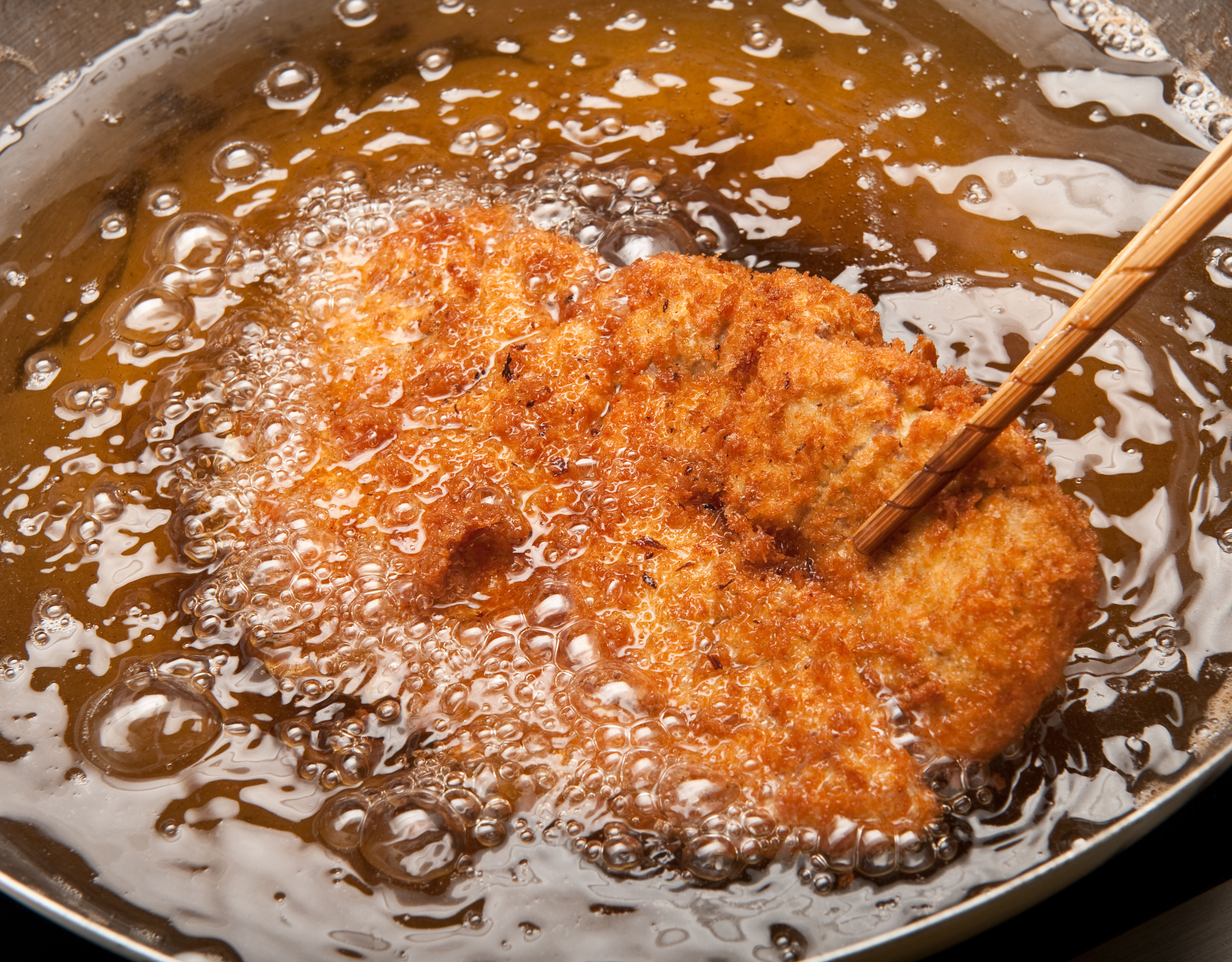The most popular type of meat by far in Japan is pork. Nearly as much pork is consumed as chicken and beef combined. It is particularly popular in Okinawa, Kyushu, and the Kanto area. My mother was born in Saitama Prefecture in the 1940s, and she doesn't remember eating beef except as a very special treat while she was growing up; she didn't eat even the humble gyūdon (beef on rice) on a regular basis until she moved to Tokyo as an adult. Pork was the meat that appeared regularly on the dinner table.
If there is one dish that managed to spread the popularity of pork more than any other, it's tonkatsu — a breaded and deep-fried pork cutlet or filet, akin to European dishes such as the schnitzel. The name itself combines the Japanese word for pig — ton — with a shortened version of the English word "cutlet" (via the Japanese pronunciation). While katsuretsu, breaded cutlets fried in butter, appeared in an 1895 cookbook, the cooking method was soon changed to involve deep-frying in vegetable oil, which was considered more efficient and economical and better suited to Japanese tastes.
Unlike curry rice and other yōshoku or Western-influenced Japanese dishes that evolved during the late 19th to mid 20th century, tonkatsu was embraced by more traditionally Japanese eateries such as soba restaurants, which were losing business to newfangled European-style restaurants. They saw tonkatsu as something they could make cheaply and easily that was substantial and filling. Several dedicated tonkatsu restaurants cropped up around the 1920s to '40s, with even more opening in the '50s and '60s, after World War II — the big boom period for tonkatsu. Several still thrive, such as Ginza Bairin (established in 1927, and now with branches in Hong Kong, Singapore and Hawaii) and Maisen in Aoyama (founded in 1965 by one woman, and now one of the largest sellers of ready-made tonkatsu products nationwide).



